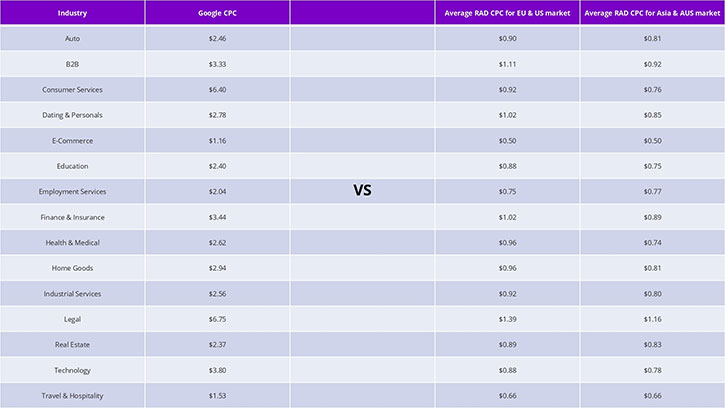Hit the ground running: How to set a Campaign Goal?

RAD your way to the finish line
Online marketing without a goal is detrimental to a brand’s growth. Imagine having done up multiple campaigns, gone through many revisions over the years, but still not able to hit a bullseye on your company’s business goals – never knowing if your efforts are paying off.
It doesn’t always have to be a ‘hit-or-miss’ situation, there are ways to ensure that your digital advertising campaigns remain accurate and effective throughout its run time, but like every good movie, the first act is always the most important in setting up how the rest of the story turns out.
Dig deep within. Set relevant goals.
Setting a campaign goal is important as it helps to align everyone working on the set marketing campaign towards a common target as a team. It lays out the “path” to take towards achieving your business goals, and it will also help to gauge the effectiveness of your campaigns and expectations.
Chartering it takes a lot of patience and commitment to map out the goals, but once that map is finished, you’ll gain access to many things – from marketing attribution to gathered data for future references and campaigns.
Here’s how to set a campaign goal in 3 easy steps, with RAD:
Step 1 – Relevance
Staying relevant to your ultimate marketing goal is important.
Everything has to be interrelated and realistic towards the crux of the matter: making a profit for your business. But every campaign should be different – not every campaign’s about ‘raking in the money’.
To enjoy the prize, you first have to focus on the journey ahead. So instead of having EVERY campaign’s goal be “increase 100% leads” or “making more sales”, plan several other campaigns to work towards that. For example: Turning a profit on a product –> needs more lead generation –> what is the market attribution –> how do we gather this information through media. That amounts up to around 3 campaign goals to achieve the first goal that you’ve set.
When you run a marketing campaign, first identify the primary purpose of it. Maybe you want to raise awareness for a new product, or perhaps to gather information for market attribution. It doesn’t always have to end in a 200% profit goal – at the end of the day, understanding the path to purchase is more of a marathon than a race.
It’s also important to remain realistically ambitious in this planning phase so as to allow for creativity to flow in the later stages, and isn’t that what marketing’s all about!
Step 2 – Avenues
The next step is to discern which avenues you’d want to journey towards.
The strength (and weakness) of the climate we find ourselves in right now is leaning everyone towards online advertising, and it’s no surprise that the e-commerce industry has peaked at over 32.4% from 2019.
As is with any campaign goal, the main idea is to ‘increase lead generation’. But where do we begin? With data from previous campaigns, begin to sieve out what works, and what didn’t, and start to pave your efforts into one avenue. Just as there is a set route for any marathon, once you have a set path to journey towards, reaching the end will be a breeze.
With the calculation of number of customers needed to generate, along with any other variable that is relevant to the campaign goal, the avenues in which you’ll have the most success in will become more apparent.
Unsure about where to start? The ReverseAds App can help you to control all of your ad campaigns easily on a single platform. With its comprehensive and user-friendly campaign dashboard, the app helps to plan campaign goals seamlessly and effectively according to previous data gathered.
Also, speaking of data…
Step 3 – Data
The cornerstone of any good goal-driven ideal – data drives future results.
Data helps you to understand your audience and marketing attribution in more detail. By setting metrics that can help to monitor progress towards your goal (e.g., KPIs), you’ll be gathering valuable data for both present and future campaigns.
Set targets and an appropriate time frame for each metric so that your approach can remain steady and realistic over the growth of your campaign. This very data can also be repurposed for your future campaigns – either adjusting key metrics or even throwing away an inefficient one.
NEED A HAND IN TRACKING YOUR CPL and ROI?
DOWNLOAD FREE TEMPLATE HERE
“But what if I don’t have any available historical data point to set my campaign’s benchmarks”
The ReverseAds app is able to create a benchmark table for considered purchase industries against yours, such as stating Google Search’s CPC avg pricing VS Keyword-based ad on the open web pricing, so that whatever the situation, you’ll always have relevant data to lean on.
CPC Benchmarks: Google VS ReverseAds

Goal setting doesn’t happen overnight. It should take a number of days where ideas and goals are thrown around, refined, and finally completed. Inject a touch of creativity and finesse, and you’ll have yourself a campaign that’s going to be a hit – with your company’s business goals aligned with it.





